Živković T, Carrell AA, Granath G, Shaw A, Pelletier DA, Schadt CW, Klingeman D, Nilsson MB, Helbig M, Warshan D, et al. 2025. Host species–microbiome interactions contribute to Sphagnum moss growth acclimation to warming. Global Change Biology. 31(2)(e70066). doi:10.1111/gcb.70066.
David Weston
Turetsky MR, Weston DJ, Cox W, Petro C, Shaw A. 2025. The challenging but unique eco-evolutionary aspects of Sphagnum moss. . New Phytologist. In press . doi:10.1111/nph.70233.
Kilner C, Carrell AA, Wieczynski D, Votzke S, DeWitt K, Yammine A, Shaw J, Pelletier DA, Weston DJ, Gilbert J. 2024. Temperature and CO2 interactively drive shifts in the compositional and functional structure of peatland protist communities. . Global Change Biology. doi:10.1111/gcb.17203.
DeWitt K, Carrell AA, Rocca JD, Votzke S, Yammine A, Peralta A, Weston DJ, Pelletier DA, Gilbert J. 2025. Predation by a ciliate community mediates temperature and nutrient effects on a peatland prey prokaryotic community. . mSphere.
Denison E, Pound H, Gann E, Gilbert N, Weston DJ, Pelletier DA, Wilhelm S. 2025. Identification of shared viral sequences in peat moss metagenomes reveals elements of a possible Sphagnum core virome. . Environmental Microbiome. 20(1):1–6. doi:10.1186/s40793-025-00719-0.
Petro C, Carrell AA, Wilson RM, Duchesneau K, Noble-Kuchera S, Song T, Iversen CM, Childs J, Schwaner G, Chanton JP, et al. 2023. Climate drivers alter nitrogen availability in surface peat and decouple N2 fixation from CH4 oxidation in the Sphagnum moss microbiome. . Global Change Biology . 29:3159–76. doi:10.1111/gcb.16651.
Norby RJ, Živković T, Weston DJ, Baxter T. 2023. Shading contributes to Sphagnum decline in response to warming. Ecology and Evolution . 13:10542. doi:10.1002/ece3.10542.
Kilner C, Carrell AA, Wieczynski D, Votzke S, De Witt K, Yammine A, Shaw J, Pelletier DA, Weston DJ, Gilbert J. 2024. Temperature and CO2 interactively drive shifts in the compositional and functional structure of peatland protist communities. . Global Change Biology 30. 30:17203. doi:10.1016/j.soilbio.2024.109316.
Kolton M, Weston DJ, Mayali X, Weber PK, McFarlane KJ, Pett-Ridge J, Somoza MM, Lietard J, Glass JB, Lilleskov EA, et al. 2022. Defining the Sphagnum Core Microbiome across the North American Continent Reveals a Central Role for Diazotrophic Methanotrophs in the Nitrogen and Carbon Cycles of Boreal Peatland Ecosystems. mBio. 13(1). doi:10.1128/mbio.03714-21.
Carrell AA, Veličković D, Lawrence TJ, Bowen BP, Louie KB, Carper DL, Chu RK, Mitchell HD, Orr G, Markillie LM, et al. 2021. Novel metabolic interactions and environmental conditions mediate the boreal peatmoss-cyanobacteria mutualism. The ISME Journal. 16(4):1074–1085. doi:10.1038/s41396-021-01136-0.





